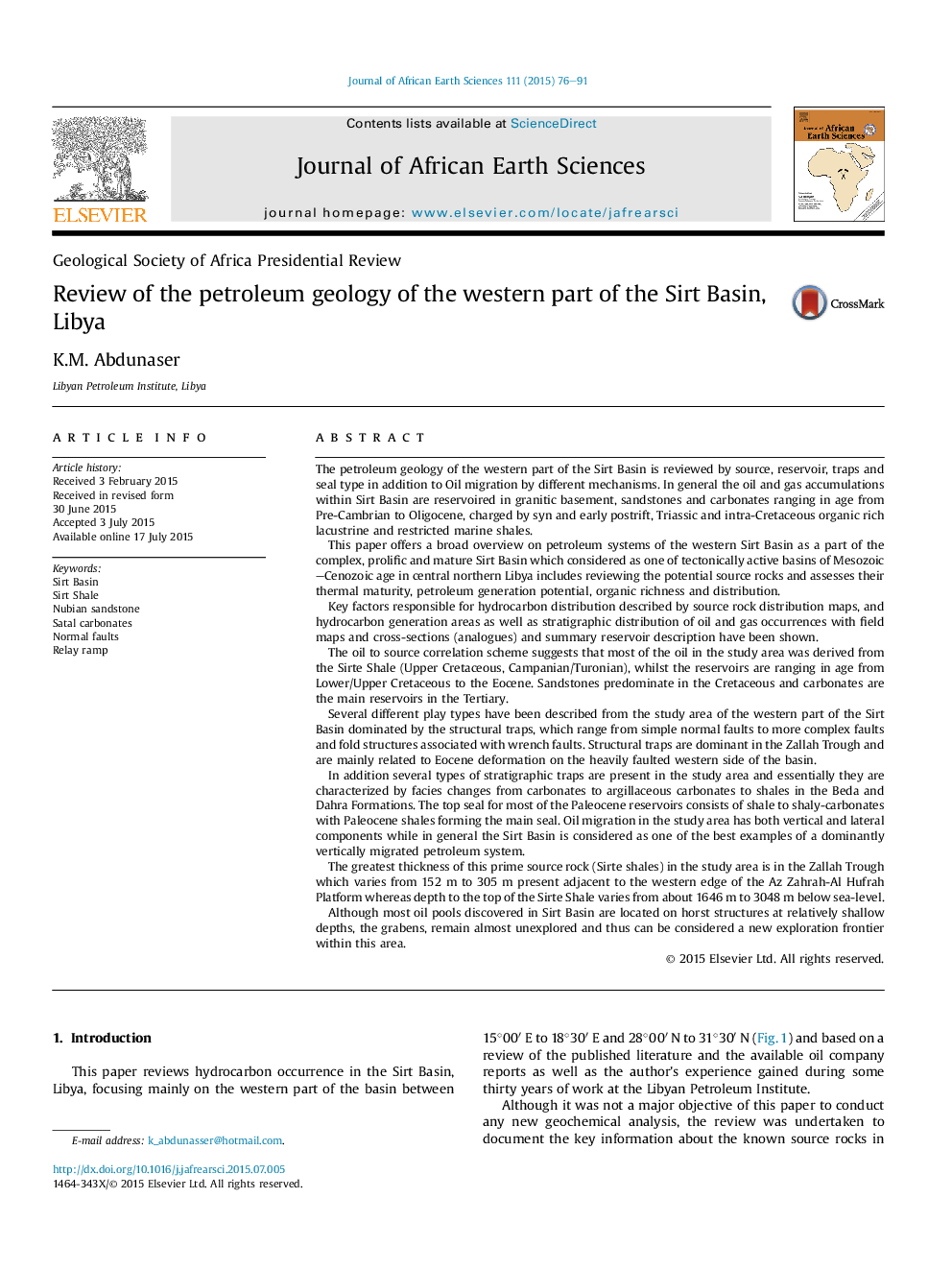| کد مقاله | کد نشریه | سال انتشار | مقاله انگلیسی | نسخه تمام متن |
|---|---|---|---|---|
| 4728485 | 1640196 | 2015 | 16 صفحه PDF | دانلود رایگان |

• This paper is to review hydrocarbon occurrences of the Sirt Basin, Libya.
• Focusing mainly on the western part of the basin.
• Based on a review of the published literature and the available oil company reports.
The petroleum geology of the western part of the Sirt Basin is reviewed by source, reservoir, traps and seal type in addition to Oil migration by different mechanisms. In general the oil and gas accumulations within Sirt Basin are reservoired in granitic basement, sandstones and carbonates ranging in age from Pre-Cambrian to Oligocene, charged by syn and early postrift, Triassic and intra-Cretaceous organic rich lacustrine and restricted marine shales.This paper offers a broad overview on petroleum systems of the western Sirt Basin as a part of the complex, prolific and mature Sirt Basin which considered as one of tectonically active basins of Mesozoic–Cenozoic age in central northern Libya includes reviewing the potential source rocks and assesses their thermal maturity, petroleum generation potential, organic richness and distribution.Key factors responsible for hydrocarbon distribution described by source rock distribution maps, and hydrocarbon generation areas as well as stratigraphic distribution of oil and gas occurrences with field maps and cross-sections (analogues) and summary reservoir description have been shown.The oil to source correlation scheme suggests that most of the oil in the study area was derived from the Sirte Shale (Upper Cretaceous, Campanian/Turonian), whilst the reservoirs are ranging in age from Lower/Upper Cretaceous to the Eocene. Sandstones predominate in the Cretaceous and carbonates are the main reservoirs in the Tertiary.Several different play types have been described from the study area of the western part of the Sirt Basin dominated by the structural traps, which range from simple normal faults to more complex faults and fold structures associated with wrench faults. Structural traps are dominant in the Zallah Trough and are mainly related to Eocene deformation on the heavily faulted western side of the basin.In addition several types of stratigraphic traps are present in the study area and essentially they are characterized by facies changes from carbonates to argillaceous carbonates to shales in the Beda and Dahra Formations. The top seal for most of the Paleocene reservoirs consists of shale to shaly-carbonates with Paleocene shales forming the main seal. Oil migration in the study area has both vertical and lateral components while in general the Sirt Basin is considered as one of the best examples of a dominantly vertically migrated petroleum system.The greatest thickness of this prime source rock (Sirte shales) in the study area is in the Zallah Trough which varies from 152 m to 305 m present adjacent to the western edge of the Az Zahrah-Al Hufrah Platform whereas depth to the top of the Sirte Shale varies from about 1646 m to 3048 m below sea-level.Although most oil pools discovered in Sirt Basin are located on horst structures at relatively shallow depths, the grabens, remain almost unexplored and thus can be considered a new exploration frontier within this area.
Journal: Journal of African Earth Sciences - Volume 111, November 2015, Pages 76–91